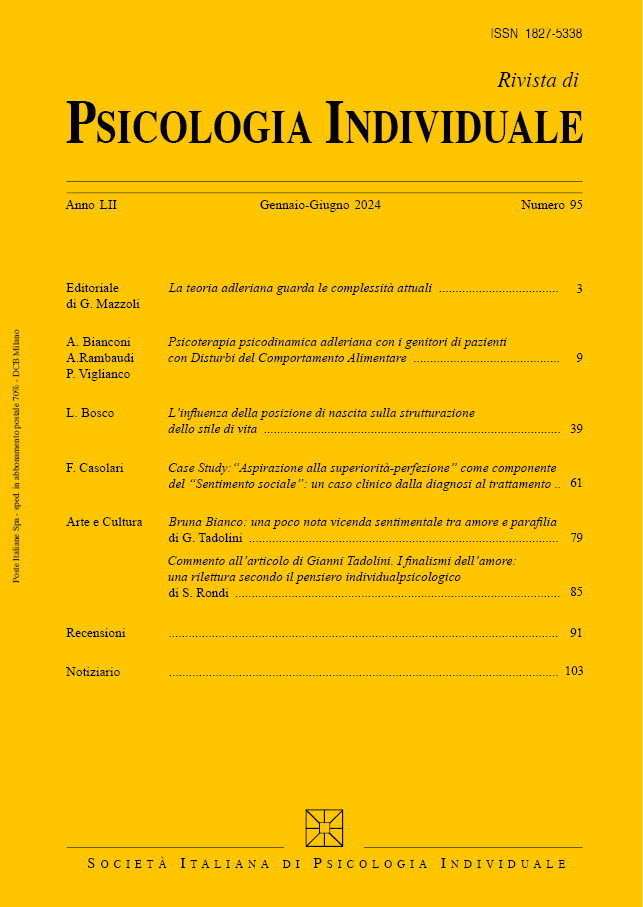IMPLICATIONS CONCERNING BORDER AND HOPE IN PSYCHOTHERAPY
Keywords:
limit, hope, creative self, vulnerabilityAbstract
The human border between therapist and patient in psychotherapy, understood as suffering, mental and physical vulnerability, can find in hope, that is understood as an aspect of the Creative Self, the energy of a human transformative relationship, that through human border leads to an existential restart. In 1908 Adler, through the script Need for affection, realizes that working with border and hope is the basis of the mother-child relationship at the beginning of child life. In 1930, with the maturity of his thought Adler anticipates recent neuroscientific discoveries. He intuits that human destiny is conditioned by the creative power placing the human mind in temporality, subjectivity and relationality. An example of unconscious movement of border and hope appears in the clinical experience between analyst and patient in which analyst practices a late maternal function. In this way he awakens the patient's perspective creativity. These guidelines have a precise consequence on therapist’s formation, in fact he needs to be not only competent but also able to relate empathically with the authoritative role of a teacher, that fertilizes and encourages the patient, which in turn accepts and recognizes its claudication as a force of creativity






